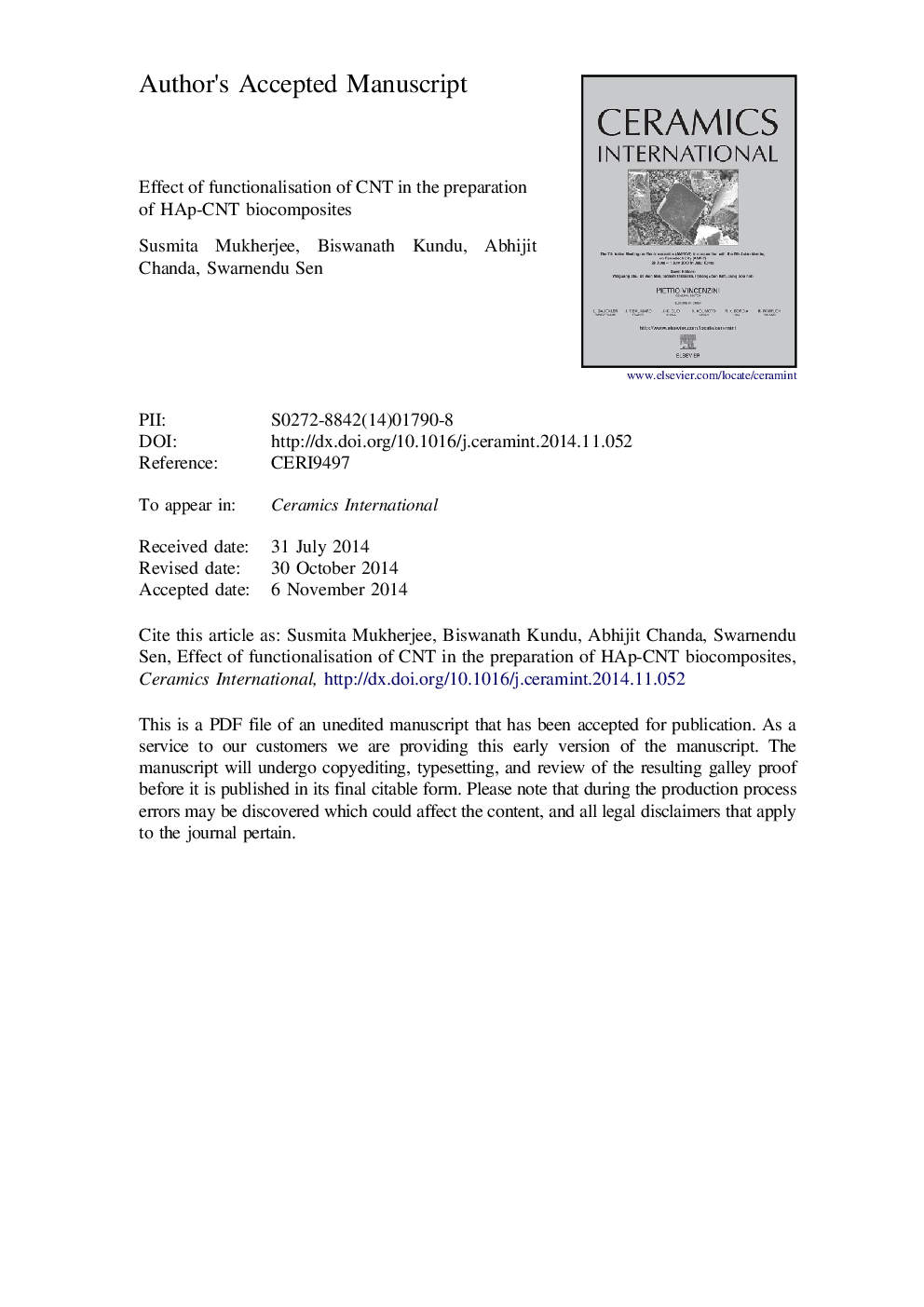| Article ID | Journal | Published Year | Pages | File Type |
|---|---|---|---|---|
| 10624751 | Ceramics International | 2015 | 38 Pages |
Abstract
Hydroxyapatite (HAp)-carbon nanotube (CNT) composites are being fabricated, where CNT acts as a reinforcement in the ceramic matrix. CNT improves the mechanical property of HAp and offers a potential implant material used for orthopaedic applications. In the present work, a comparative study is presented to analyse the effect of functionalisation on the properties of HAp-CNT nanocomposites, prepared by a simple shear mixing technique. The MWCNT chains were functionalised with carboxyl groups, confirmed through FTIR spectra. FESEM and TEM results of the composites showed that for non-functionalised chains, CNT molecules were present in sporadic clusters while the functionalised chains were found to be dispersed in the HAp matrix. Fractographs exhibited the presence of CNT chains acting as bridges across the cracks. Nanocomposites with functionalised CNT molecules exhibited better mechanical properties compared to non-functionalised ones as revealed through HV, K1c, nano-indentation H and E estimation, flexural and compressive strength and impact resistance. This superiority of composite specimens may be attributed to the crack bridging action of the CNT. Both composites exhibited excellent haemocompatibility and incorporation of CNT molecules and functionalisation did not affect this.
Related Topics
Physical Sciences and Engineering
Materials Science
Ceramics and Composites
Authors
Susmita Mukherjee, Biswanath Kundu, Abhijit Chanda, Swarnendu Sen,
